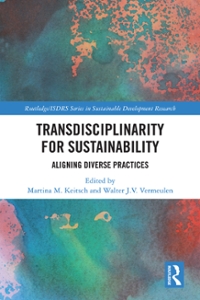Answered step by step
Verified Expert Solution
Question
1 Approved Answer
Consider the balance sheets of two separate banks. Bank A has (in millions) 200 in transactions deposits; 600 non transactions deposits; 50 reserves; 920 loans;
- Consider the balance sheets of two separate banks. Bank A has (in millions) 200 in transactions deposits; 600 non transactions deposits; 50 reserves; 920 loans; 100 borrowings and 250 securities. Bank B has (also in millions) 200 in transactions deposits; also 600 non transactions deposits; 30 reserves; also 920 loans; also 100 borrowings and 50 securities. Based on the information provided, what conclusion can you draw about these banks?
- Bank A faces the greatest liquidity risk, and also the greatest risk of insolvency
- Bank B faces the greatest liquidity risk, and also the greatest risk of insolvency
- Bank A faces the greatest liquidity risk, while bank B faces the greatest risk of insolvency
- Bank B faces the greatest liquidity risk, while bank A faces the greatest risk of insolvency
- Mishkin calls on the responsibility of financial innovation in the subprime financial crisis of 20072008. He particularly points at: "... the development of new, sophisticated financial instruments products led to ______________ that are derived from cash flows of underlying assets and can be tailored to have particular risk characteristics that appeal to investors with differing preferences". The type of security he aims at in this statement is called:
- Structured credit products
- Mortgage backed securities
- Collateralized debt obligations
- Alt-A mortgages
- Which of the following factors is not a trigger for the Eurozone financial crisis (banking & sovereign debt crisis) according to Mishkin?
- Cheap credit
- Fiscal imbalances
- Stock market volatility
- Financial innovation
- Mishkin mentions various categories of factors that play an important role in financial crises amongst others he mentions asset market effects on balance sheets. Which of the following propositions is not one of these so-called asset market effects?
- Stock market decline
- Unanticipated decline in the value of the domestic currency
- Asset write-downs
- Increases in interest rates
- Which of the following statements is not one of the eight financial facts as explained by Mishkin? A) In the US the amount of finance raised by the issue of new shares each year is larger than the amount of bank credit advanced
- The majority of household debt in the EU economies consists ofcollateralized loans
- Bond or loan contracts are legal documents that contain restrictive covenants
- In developing countries banks play an even more important role in the financial system than they do in the industrialized countries
- Which of the following statements about bonds is false?
- Long term bonds are just as volatile in prices and returns as short term ones. The long run is composed of many short runs after all
- Long term bonds are typically more volatile than short term ones
- Long term bonds have higher duration than short term bonds
- Long term government bonds are less liquid than short term T-bills.
- Which of the following items on a bank's balance sheet typically exhibit the highest liquidity?
- Cash reserves
- Long-term government bonds
- Short-term Treasury bills
- The non-securitized part of the loan portfolio
- The most important channel of funds is...
- Indirect Finance
- Direct Finance
- Stock market
- Inheritance
- Which of the following statements is not conforming the interest parity condition?
- The foreign exchange market is informationally efficient
- Expected currency returns are the same regardless the currency of denomination
- There is no room for riskless arbitrage
- If the cross country interest differential equals zero, the market does not expect a change in the exchange rate
- Asymmetric information is not causing ...
- Moral hazard
- Risk diversification
- Principal-agent problems
- Adverse selection
Step by Step Solution
There are 3 Steps involved in it
Step: 1

Get Instant Access to Expert-Tailored Solutions
See step-by-step solutions with expert insights and AI powered tools for academic success
Step: 2

Step: 3

Ace Your Homework with AI
Get the answers you need in no time with our AI-driven, step-by-step assistance
Get Started


